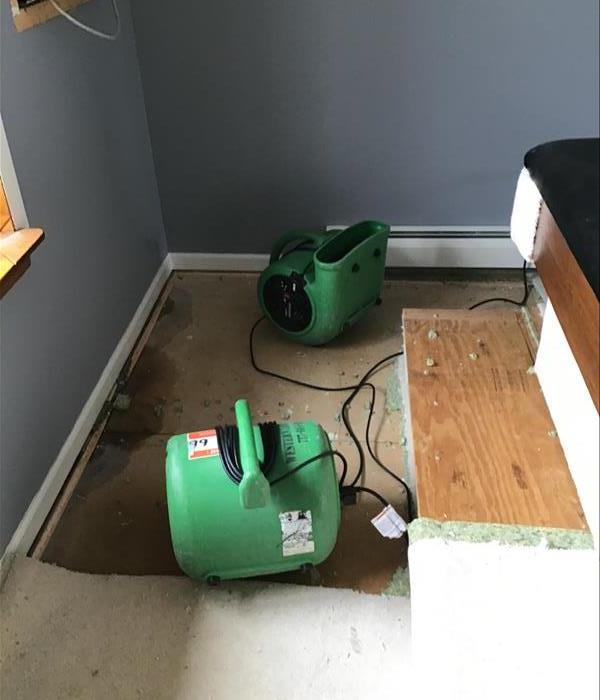Steps In Storm Damage Restoration
9/3/2021 (Permalink)
 This is an example of storm damage in a customers home that SERVPRO of East York came to dry out and restore.
This is an example of storm damage in a customers home that SERVPRO of East York came to dry out and restore.
Storm restoration has become a common activity as incidents of storm damage continue to increase. Natural disasters have been on the rise occasioned by human activities that have played a role in promoting climate change. Common natural disasters that ca lead to storm damage include tornadoes damage, hurricane damage, river flooding, ice damming, ice damage and snowstorms. A flooded home often suffers from roof leaks, roof damage, structural damage, and water damages due to flooding and excessive ground water. Professional storm restoration services will help you with home restoration after flooding occurs or your home suffers a wind damage, a hurricane damage, or a ice damage. A flood pump helps you pump out flood water or excess ground water quickly. They will also need to fix frozen pipes that prevents water from flowing out and ice dams that may lead to roof leaks.
Below are the various steps that are involved during professional storm remediation.
1) Make an emergency contact with your service provider
After a flood water or excess ground water hits your home, the first step of water restoration is making an emergence call to your local water restoration company. You should be able to inform the water restoration company of the level of flood water or ground water in your home to enable them prepare sufficiently for the storm remediation. Local storm restoration companies provide their services on a 24/7 basis and you can call their offices at any moment. Roof damages due to storm damage can lead to roof leak and you will need to seek emergency roof repairs.
2) Ensure that you are safe from any potential risks.
Storms comes with various risks that can threaten your safety and you need to take preventive and precautionary measures. The first source of risks in case of a flooding is the power sources in our home or business and you need to ensure that all power sources are switched off immediately. The home restoration company should determine the river flooding levels, amount of flood water, wind damages, ice damage, hail damage, and river flooding levels at the beginning of the storm remediation. A flood pump can be helpful in getting rid of flood water or excess ground water and eliminating the risk of water damage for your households. In case there are broken pipes or frozen pipes, they will need repairing in addition to fixing any roof leaks.
3) You should document evidence of storm damage.
You must document evidence of water damage, ice damage, hail damage, wind damage, and roof damage. Documentation of evidence is important, as it is important for insurance claim forms filling. In case you used a flood pump to get rid of water, you can take photographs, record videos, and record any relevant audios. Ice dams can lead to ice damming and this can lead to frozen pipes that are beneficial as they can cut water supply.
4) Notify your insurance agent of the storm damages.
After you have done documentation of storm damages, you should notify your insurance agent so that they can initiate the process of compensation. In case the insurance company needs to carry out an inspection, they can do it as soon as possible when the state of your damaged property is still intact.
5) You can seek Federal Disaster Assistance when in need of extensive storm remediation.
The federal governments has an elaborate program to help those affected by river flooding, wind damage and other forms of natural disasters. The federal government provides subsidized loans to allow victims restore their homes by paying for minor services for roof repairs and water restoration. This makes it easy for you to cope with ice damming, flooding, hurricane damage, and hail damage.
6) Management of ice dams, wind damage, hurricane damage, hail damage, and roof damage
Home restoration after a flood will involve minor ad major repairs such as window and door repairs, household replacement, restoration of water and electric supply, and checking for ice dams. A home restoration process should begin as soon as possible to minimize damages from hail damage and potential roof repairs. You should ensure that frozen pipes due to ice damming and frozen dams are heated up to restore water supply. In storm restoration, dehumidifiers are used to absorb water moisture and water suckers to allow the restoration personnel to pump water out using flood pumps. A roof repair is also important in fixing minor roof leaks.



 24/7 Emergency Service
24/7 Emergency Service